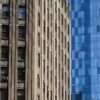The rapid loosening of the ECB’s monetary policies has eclipsed the window of opportunity enjoyed by bond investments, the hunt for yields.
However, European high yield still has potential and offers an opportunity with its 5.5% yield, described as attractive by some managers despite certain data that may cast doubt. The market can no longer be viewed with the same eyes as in the early 2000s. An example…
With a yield of 5.5%, European high yield bonds currently offer a 2.5% premium over Investment Grade (IG) bonds rated AAA to BBB-.
High-yield bonds remain an opportunity, even if some of the current market figures may raise doubts. This asset class should no longer be viewed with the same eyes as it was in the early 2000s. The current yield premium offers a return that is judged to be sufficient in relation to the risk of this bond asset class.
This 2.5% yield premium over investment-grade bonds is well below the average for the past 20 years, and even the past 10 years. However, this comparison is misleading, despite the geopolitical problems and risks that have added up today.
What’s changed since 2000..
Indeed, in the early 2000s, 60% of high-yield bonds had a simple B rating. Today, these figures have been practically reversed, with an increase in quality. The market is now 70% BB-rated, reflecting the less risky nature of this asset class than in the 2000s.
Then the market diversified. Still in the early 2000s, more than a third of the market was concentrated in the telecoms sector, a sector that was probably inflated at the time by the blossoming and effervescence of the Internet. Today, the market has digested this excess and is much better balanced. No sector now has a weighting of more than 15% of the asset class.
Although the market sometimes suffers shocks, it recovers very quickly. The high yield of these bonds provides a cushion against market downturns. Each time the market has been hit by a severe correction over the past 25 years, it has taken no more than a dozen months to recover lost ground and reset the counter to zero. The reason for this is the high yield of these bonds, in contrast to equities whose dividend is much lower. In each case, the equity market was considerably slower than the High Yield market in erasing its losses.
Over the past 25 years, in terms of performance, IG-quality corporate bonds – with a minimum BBB rating – have returned 3.7% every year. Alongside these other corporate bonds, those in the high yield class – rated below BBB – offered 5.9%, a bonus of 2.2% each year.
The main risk for these companies is their ability to repay their debts. Estimating earnings is fundamental to stock selection.
With economic growth weakening in recent quarters, earnings estimates for companies in the high-yield niche have taken a bit of a beating. But in recent weeks, the latest data have been more reassuring. The consensus is now more in line with a rebound, according to Kyle Kloc, Senior Investment Manager at Pictet AM, who adds: “Cash flow is one of the numbers to watch most closely, it’s the cornerstone because it better reflects the ability of these companies to repay their debts.”
As a sign of clear-sightedness, but also of less rigid financial statements, more and more of these low-rated companies have benefited from the fall in interest rates. Instead of waiting for the due dates to arrive, some have been strong enough and wise enough to anticipate, opting for early refinancing of some debts with close maturities in order to seize better conditions but also reschedule these debts.
Default rate up but..
The downside is that the default rate has tended to rise in recent quarters. However, these data must be interpreted with care. Historically, the majority of defaulting companies were small. More recently, some very large companies have experienced payment defaults, distorting the figures. So, if the default rate seems high, it is linked to these large companies and their individual issues, rather than to the market as a whole.
Translated with DeepL.com (free version) According to Kyle Kloc, this default rate should fall by 2026.
While the capital recovery rate after default is also higher, particularly for secured bonds (which benefit from the issuer’s own guarantee) at 80%.
Differentiating between ETFs and HY funds
Bernard McGrath, Senior Client Portfolio Manager Fixed Income at Pictet AM, also advocates a good sectoral and geographical breakdown of issuing companies, and stresses the importance of management. “Particularly in this high yield market and more than in a GI bond portfolio, It’s important to be an active, dynamic investor.”
Since Kyle Kloc took over the helm of Pictet AM’s Eur-High Yield strategy in September 2023, the outperformance of the ETF family has increased: 18.5% versus 14.9% since then. “It’s also crucial to take into account company fundamentals, which an ETF doesn’t allow, thus limiting allocation and flexibility.” adds Bernard McGrath.
Although less risky than equities, bond investing is nonetheless complex and can require delicate handling and “greater selectivity”, says Kyle Kloc.
The high-yield bond segment is all the more attractive as its relatively short duration, averaging three or four years, inherently limits risk-taking.
European high yield is less volatile and structurally less risky than US high yield.









